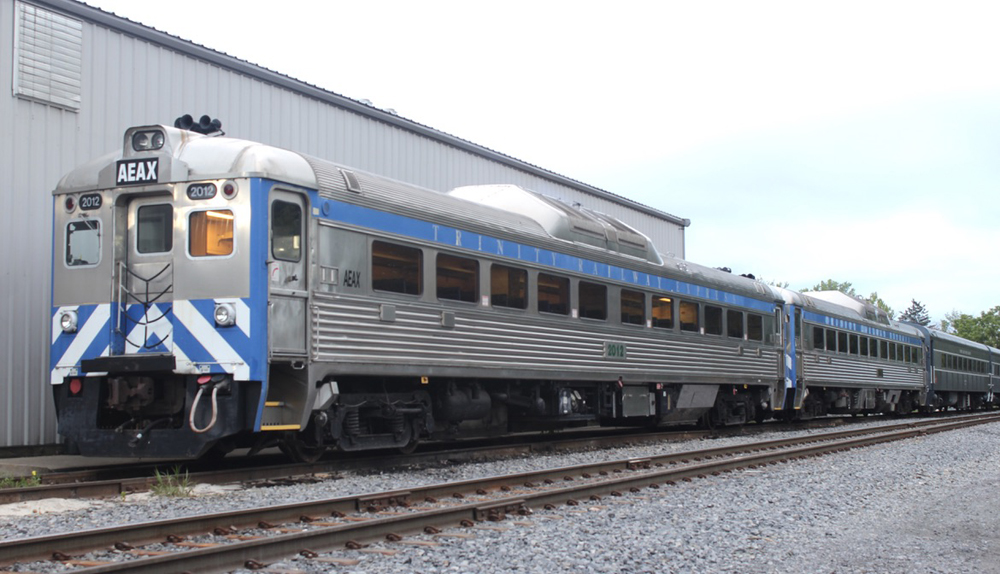
BRUNSWICK, Maine — A proposal to use a Rail Diesel Car to offer year-round connections on a former Maine Central branch line from Rockland, Maine to a rendezvous with Northern New England Passenger Rail Authority’s Amtrak-operated Downeaster at Brunswick, Maine, is being re-evaluated after the RDC suffered a debilitating breakdown last fall.
Midcoast Railservice, the carrier with operating rights on the state-owned track, had planned to use the leased “Coastliner” under a proposal to the Maine Department of Transportation.
Meanwhile, as NNEPRA and Amtrak are actively working to extend Downeaster round trips from Brunswick to Rockland this summer, a company that has offered proposals to compete with Amtrak on the Northeast Corridor went to the state DOT with a different plan.
Just run it
Midcoast vice-president George Betke tells Trains News Wire his company’s proposal to Maine Transportation Commissioner Bruce Van Note dates from 2019. That’s when he suggested launching multiple daily round trips with a self-propelled railcar to test passenger demand, rather than first spending money and wasting time on consultant studies. In response, the state allocated $3 million for a three-year test beginning in 2023 [see “Maine DOT proposes $3 million for pilot …,” News Wire, Feb. 2, 2023].
“The well-maintained branch remains an ideal commercial test bed for an inexpensive-to-operate, self-propelled vehicle: the line is strategic enough to be visible [to local residents] and small enough to be manageable,” Betke says. While plans to connect with the Downeaster at Brunswick were being debated, Midcoast ran almost a dozen excursions to Rockland last summer and fall [see “‘Coastliner’ RDCs to debut …,” News Wire, June 28, 2023].
Then in September, Midcoast learned its primary freight customer, Dragon Products, announced it was shutting down operations. “We need to find a way to transform this branch from freight with some passenger service into a passenger-dominated corridor that still has responsibility for incidental freight,” Betke says.
To make matters worse, the company discovered an electro-mechanical relay had failed on one of the RDC’s two engines. “We were unable to find a replacement on short order or figure out a substitute,” Betke says, adding, “Everybody loved the car. They liked its appearance, comfort, spaciousness, big windows for scenery viewing, but we reluctantly made the decision that it probably wasn’t a good idea to rely on it to provide a seven-day-per-week schedule.” The company had installed an accessible restroom at its own expense in the now-disabled car; a companion RDC remains operational in excursion service for Midcoast parent Finger Lakes Railway, based at Geneva, N.Y.
Through round trips sought
It is possible for Amtrak and NNEPRA to treat Rockland branch service as a separate contract operation, similar to an independent Thruway bus connection in Amtrak’s reservation system. But because self-propelled equipment isn’t an option at this time, the Maine-based operating authority hopes to extend Downeaster round-trips to Rockland this summer.
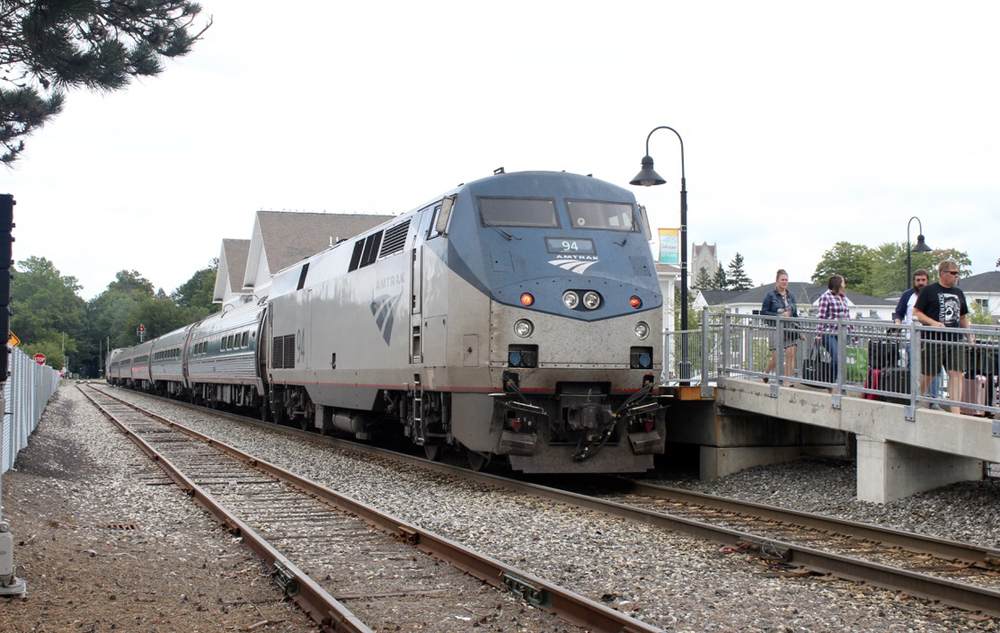
“Right now we’re looking to see if we can get limited service going with Amtrak using existing Downeaster equipment,” explains NNEPRA Executive Director Patricia Quinn in an email to News Wire. The plan involves running a morning trip from Brunswick, where trains are maintained at a layover facility, to Rockland. Then, train No. 684, which currently leaves Brunswick for Boston at 11 a.m., would instead depart earlier from Rockland. Evening train no. 685 (currently a 7:05 p.m. arrival at Brunswick from Boston) would be extended to Rockland as a round trip.
“In addition,” Quinn adds, “we’ve asked Amtrak if there is a possibility of securing a short set — two coaches — to supplement as a midday round trip. The goal is to operate three round trips daily.

Quinn says NNEPRA has given Amtrak the green light to begin the necessary work to meet system safety compliance requirements. “That will take some time, but we’re still hoping to at least launch something this summer; the goal is year-round service,” she notes.
Before service can begin, Quinn says existing temporary platforms used for Midcoast’s 2023 excursions will have to be refreshed, and a new one built at the Wiscasset stop. “We’re working in partnership with the Maine DOT, and there is a lot of community support, so I think we should be able to work through the station piece if the rest comes together,” Quinn says.
Once Amtrak becomes involved, the venture becomes more complicated. Its crews need to be trained, while overhead costs tacked onto equipment usage potentially make the operation substantially more expensive than if it was an independent initiative. The national carrier also necessarily calls the shots on right-of-way improvements it requires and is responsible with NNEPRA in striking an operating agreement with Midcoast.
An outside proposal
The alternative, unsolicited proposal to Maine DOT for the Rockland branch does not seek to establish the year-round transportation option NNEPRA, Midcoast and Amtrak are contemplating. Instead, the plan by AmeriStarRail LLC proposes to operate six daily Brunswick-Rockland round-trip excursions connecting to Amtrak trains, plus bus service from downtown Boston to Brunswick, Rockland, Bar Harbor, and Acadia National Park, from May 1 to Oct. 27, 2024.
A letter dated Jan. 12, 2024, that was sent to the media says the MidCoast Maine Central trains, “will offer Coach, First Class, and Dining Car service” and with each adult ticket purchased (sample fares were not provided), “kids 17 and under will ride free in the Family Coach Car.”
Equipment has not been specified in the letter to Nathan Moulton, Maine DOT’s Director of Freight and Passenger Services from Scott Spencer, AmeriStarRail CEO. City managers along the route, Finger Lakes President Mike Smith, and NNEPRA Executive Director Patricia Quinn were copied.
Midcoast’s Betke told News Wire that no one from AmeriStarRail had contacted the host railroad with any details before or after the letter was sent. But after an earlier version of this report was posted today, Spencer emailed News Wire to explain that negotiations had indeed taken place with Finger Lakes officials in Geneva, N.Y., to develop schedules and keep slots for Midcoast Railservice freight trains.
News Wire has asked for more details on what AmeriStarRail is proposing.
— Updated and substantially revised at 1:25 p.m. CT with new information from Northern New England Passenger Rail Authority Executive Director Patricia Quinn, AmeriStar Rail CEO Scott Spencer.






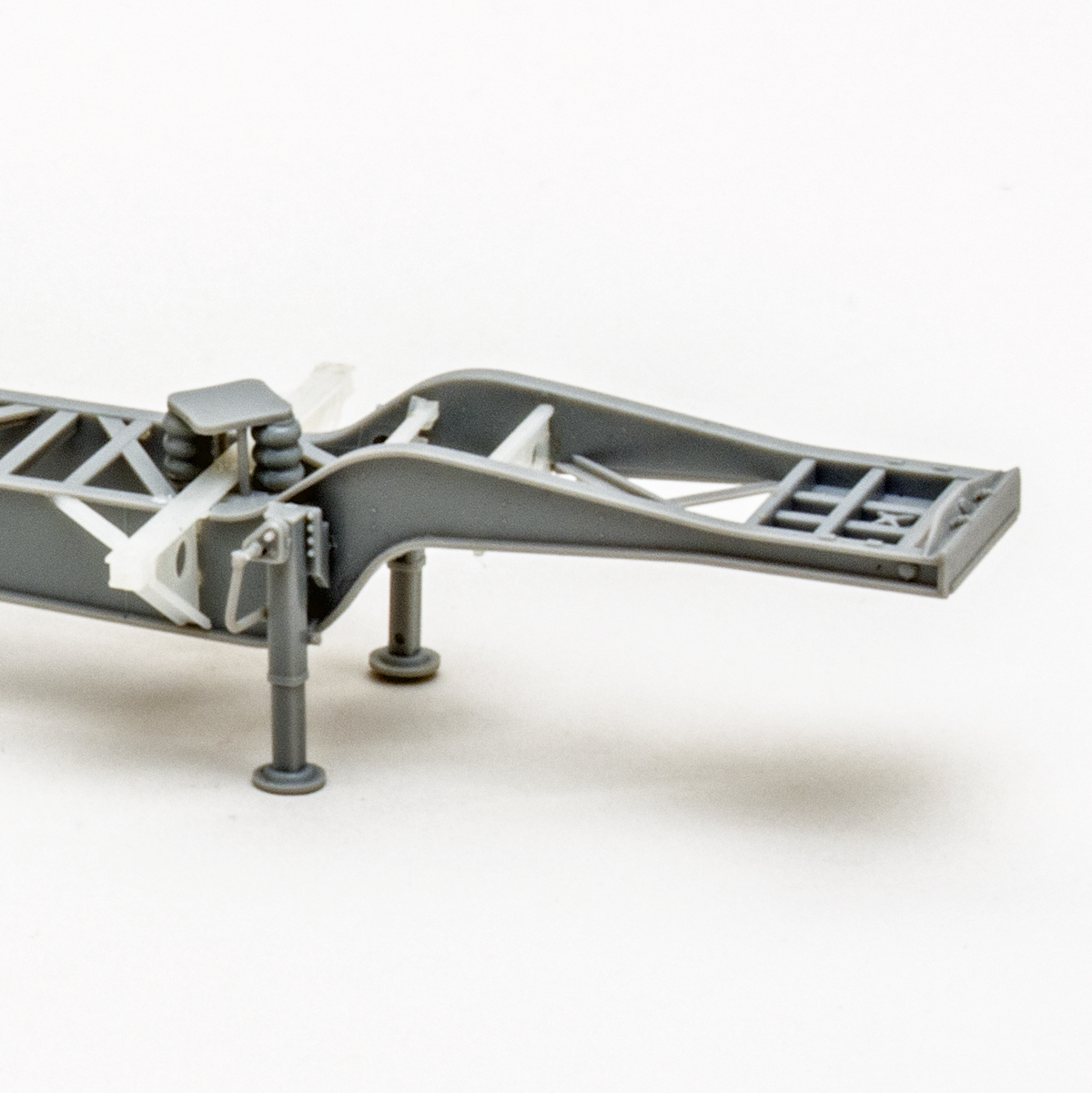
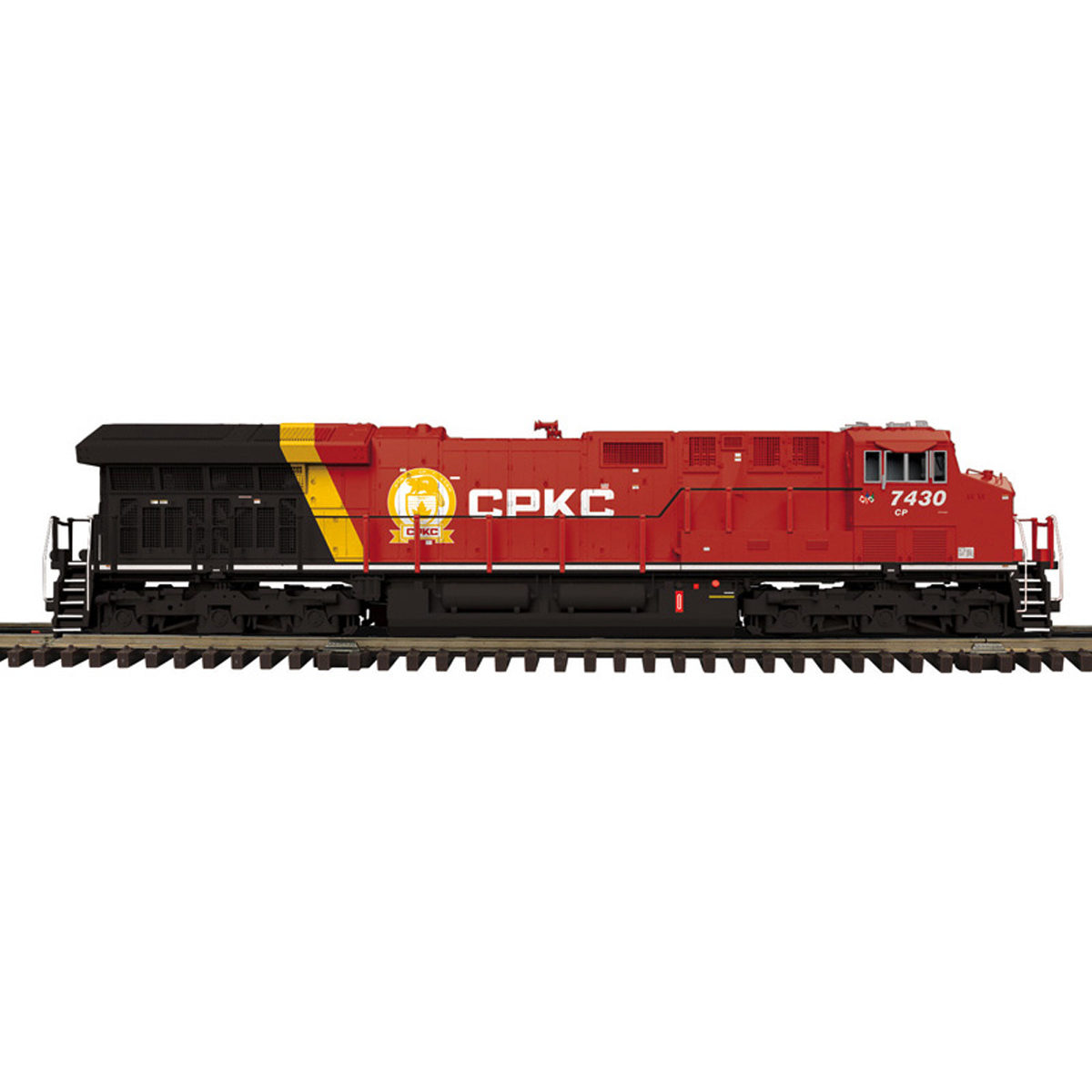
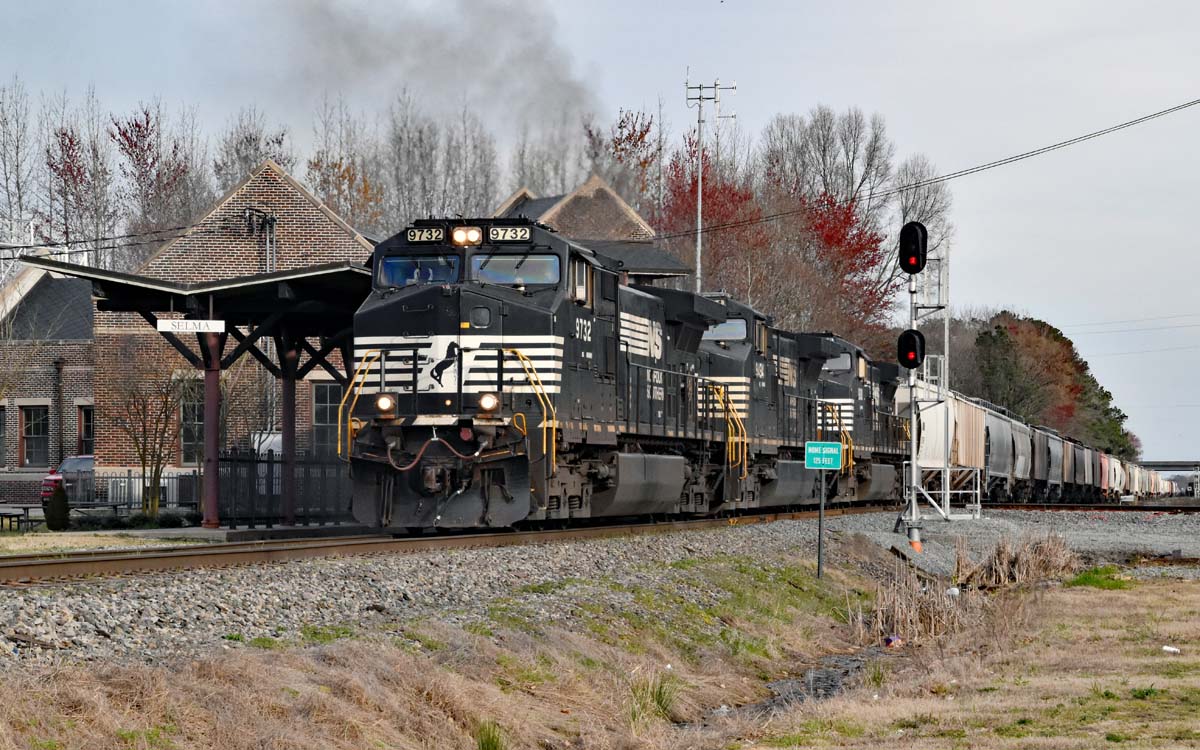
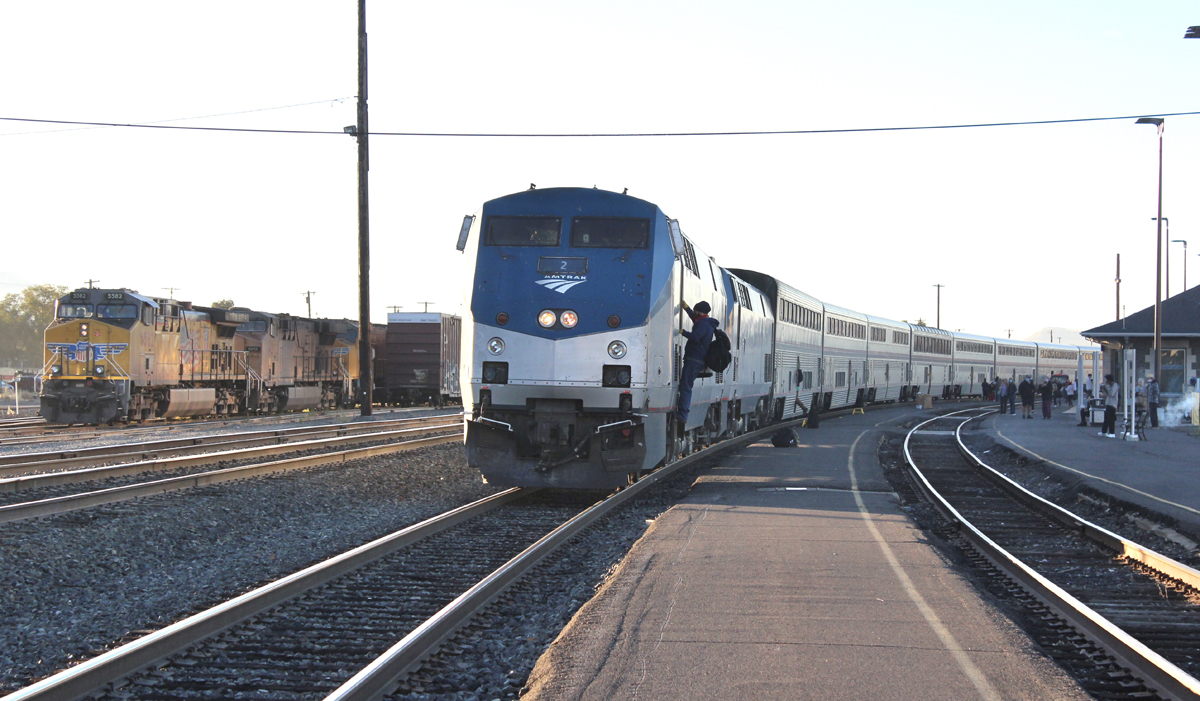




Most if not all the RDCs remaining and being used are close to 70-80 years old. If you are going to operate branch line service, they have to come up with a modern solution to the RDC. Either modern DMU equipment or battery operated railcars that incorporate all the latest safety and technical features and innovations as well as being energy efficient. The RDCs were innovative in their day but now a modern
replacement car for today’s use is needed to provide safe, economical and efficient service on branch lines. Yesterday’s technology just won’t cut it or make it
Joseph C. Markfelder
RDC’s should be the life blood of Branch Service. They run in both directions, no need to turn them. Serve smaller communities as viable transportation, and are less expensive to run.
Many years ago, Paul Reistrup who was Amtrak’s second president and a very qualified and capable leader was of the opinion that any rail line be a branch line of main line that could only support an RDC or two and was the only equipment being used was not worth keeping or in operation. RDCs might have been a great innovation when they first came on the scene but are expensive and for the amount of ridership are not really worth the cost of operation . Safety wise it is not safe for the engineer sitting right in the front and of course in the event of a collision whether it be on the rails or even at a grade crossing, the engineer is the first in line to either be seriously injured or killed. At least there is a measure of protection and safety for an engineer in a locomotive as compared to an RDC. Metro North got ride of their RDCs on their branch lines several years ago The Waterbuy and Danbury branches were reequipped with a locomotive and coaches. Even the shuttle that ran from Pougkeepsie, NY to Croton-Harmon that had an RDC was replaced by a combination of direct train service to GCt and shuttles using locomotive and coaches. Budd tried to keep the idea afloat with a modern version of the RDC which was the SPV-2000 but that was a failure and those cars never achievied what their older counterparts done. Amtrak had a number of those SPV-2000s which were taken out of service and most if not all were scrapped. The RDCs might have been great for teir time and era but I still feel that for efficiency and safety nothing beats or takes the place of a locomotive with coacches. I also might add that as a model railroader, I had RDC models in N scale which I ran but I never really cared for them or ran them on my layout. Eventually I took them and converted them into regular passenger coaches to be pulled by a locomotive pretty much like the prototype did in most cases
Joseph C. Markfelder
The two leased RDCs came from the fleet of Vermont’s AllEarth Rail in Barre. I accept that an electro-mechanical relay failed, but am mystified as to why the needed part–even a replacement engine, could not be acquired from the other AllEarth cars. AllEarth purchased a dozen former Trinity Rail Express RDCs, along with a sizable parts cache that filled multiple containers. What was unique about the car that failed?
Sadly (for us rail advocates in Vermont–which could never seem to find the will to use these cars) it now appears that the AllEarth fleet may be heading for the Gaspe Peninsula in Quebec Province, Canada. The Gaspe Ry, like the Maine operation, still provides some freight transport, but also is committed to the return of Montreal-Gaspe VIA’s CHALEUR service when track and bridge upgrades (actually underway) are completed and also to an RDC based tourist service if a marketing study finds it worthwhile. The Gaspe interests have made a deposit on the AllEarth cars, but apparently the final purchase is conditional to a positive result from the tourist rail survey.
VIA suspended (but promised someday to resume) the CHALEUR when bridges and washouts closed much of the Gaspe Ry in 2011. After over a decade of (slow) work, that project is finally nearly done. The RDCs might also be used (as CN once did before VIA) to provide a cross-platform connection at Matapedia, PQ to the VIA OCEAN LIMITED.
Aside from obvious questions of mechanical reliability and possible corrosion, RDC’s raise two issues: (1) Disabled access. (2) Safety for the engineer in a crash.
RDCs had their day but now belong in museums.
…and the Rockland Branch has many grade crossings.